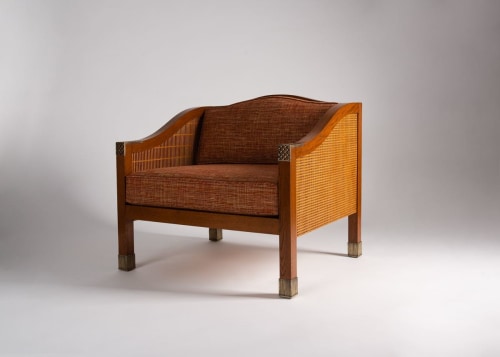

Born in 1943, Louis Cane studied at the School of Decorative Arts in Nice and, later, at the Superior School of Decorative arts in Paris. Beginning his career as a painter, he was an active member of the Soporte/Superficie movement in the late 1960s, and co-founded and edited the Peinture, Cahiers Theoriques.
In the mid 1970s, Cane created the first of what are now known as his Meninas, canvases painted with semi-abstractions of arcs and angels. Figuration soon became a greater part of his work as the artist grew ever more interested in the history of painting. It was in this period that he also began to sculpt—primarily the female form in a traditional style.
This rich history took center stage in his work since, and among the greatest influences upon his work Cane counted Picasso, Goya, Matisse, Stella, Pollock, de Kooning, and Monet (a series of his own water lilies were displayed at the Musée l’Orangerie in Paris in 1994).
Cane’s work, as it evolved, can be seen as a sustained effort to enlarge our conception of what painting might be, and to further diminish the already blurred lines between disciplines. This trailblazing spirit—that made of him a sculptor as well as a groundbreaking painter—also led Cane to design. And over the last quarter of a century, the creation of furniture became the central part of his artistic practice.
His work in the field of design has been characterized by Christies, at which a major sale of his work was held in November, 2020, as a “juxtaposition of materials and techniques,” and heralded as “both contemporary and timeless.” As ever a student of history, Cane himself is quoted by the house as saying, “I often wonder about the reasons for the incredible wealth of creation in the 18th century, when cabinetmakers and sculptors created works that were both beautiful and easy to live with.”
Louis Cane died in 2024.